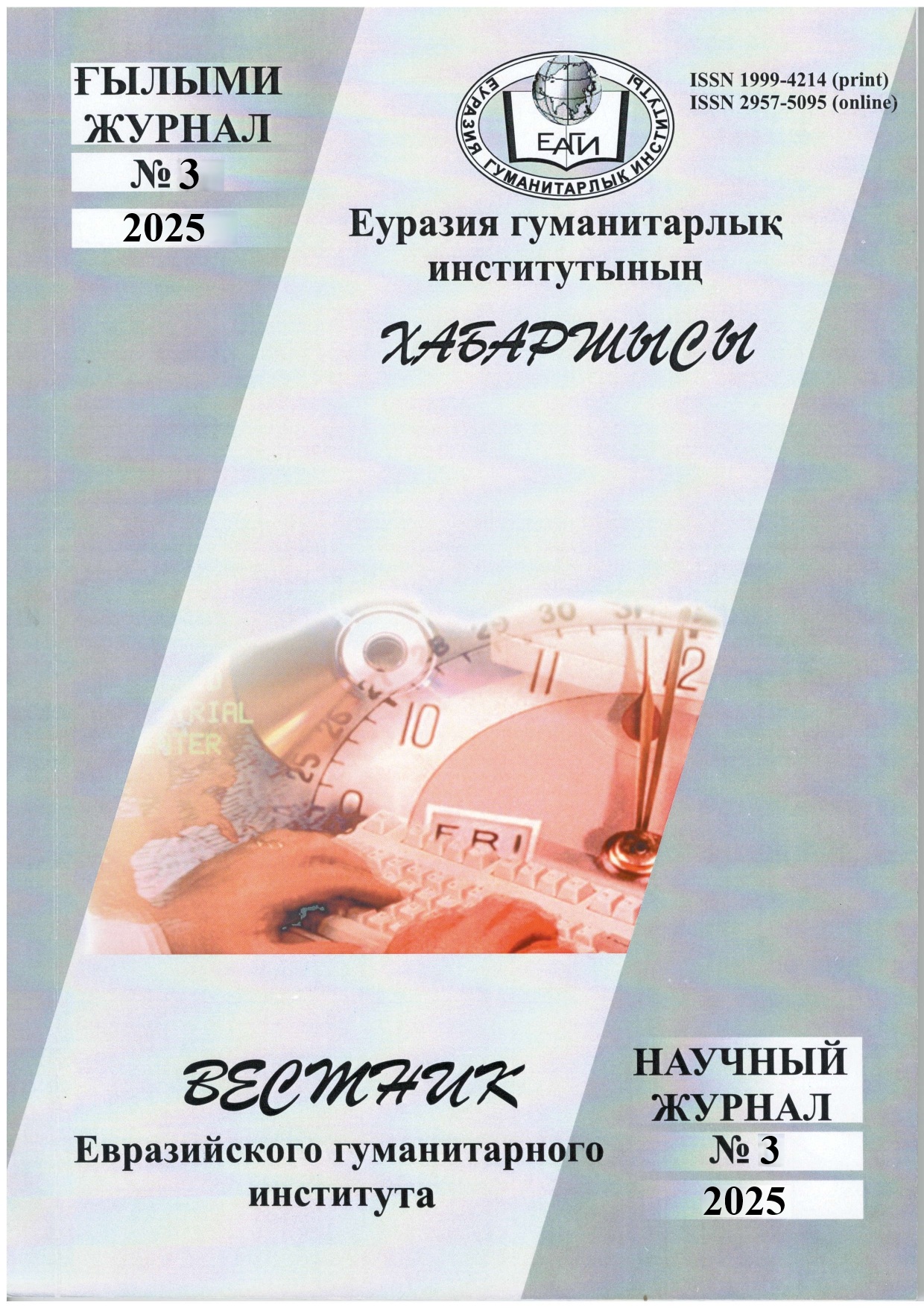*LINGUISTIC FEATURES OF SCHOOL TEXTBOOKS TERMS(Based on the example of the subject "Fundamentals of Law")
DOI:
https://doi.org/10.55808/1999-4214.2025-3.08Keywords:
terminology, school textbook, civil law, fundamentals of law, consistency.Abstract
The article analyzes the problem of terminology in the textbook on the subject “Fundamentals of Law” for schoolchildren from a linguistic perspective. To ensure terminological consistency and enhance comprehension for students, linguistic features of textbooks from different historical periods are compared with contemporary ones. The relevance of the research is explained by the fact that the textbooks of the "Alash" period laid the foundations for the formation of legal concepts, when the tendency to adapt legal vocabulary to the Kazakh language and their identification with national concepts prevailed. In the Soviet-era textbook “Ethics. Society. Law” and others, it is noticeable that a number of terms have undergone changes under the influence of ideology. Meanwhile, textbooks prior to 2010 and after 2017 sought to unify terms within a single system, making them more internationally aligned in step with globalization.
This paper examines how well the content and language of these textbooks match students’ age-related needs. In this context, it identifies methods and techniques for mastering terminology by comparing legal terms with the English “Oxford Dictionary of Law.” It evaluates the progression and complexity of terms, assessing their role in enhancing students' legal literacy and overall legal culture. Additionally, frequently used legal terms in school textbooks, such as civil, criminal, administrative, and international law, are validated through statistical data.
The scientific novelty lies in revealing continuity in legal terminology development by contrasting modern textbooks (post-2010) with historical examples.
Its practical significance lies in making standardized terms clearer for learners, improving legal concept quality, enhancing legal education standards.
The main source of this study is terms from the “Fundamentals of Law” textbook for grades 9–11. Content analysis was used for the "Alash" and Soviet periods, while comparative and statistical methods contrasted these terms with the "Oxford Dictionary of Law.


